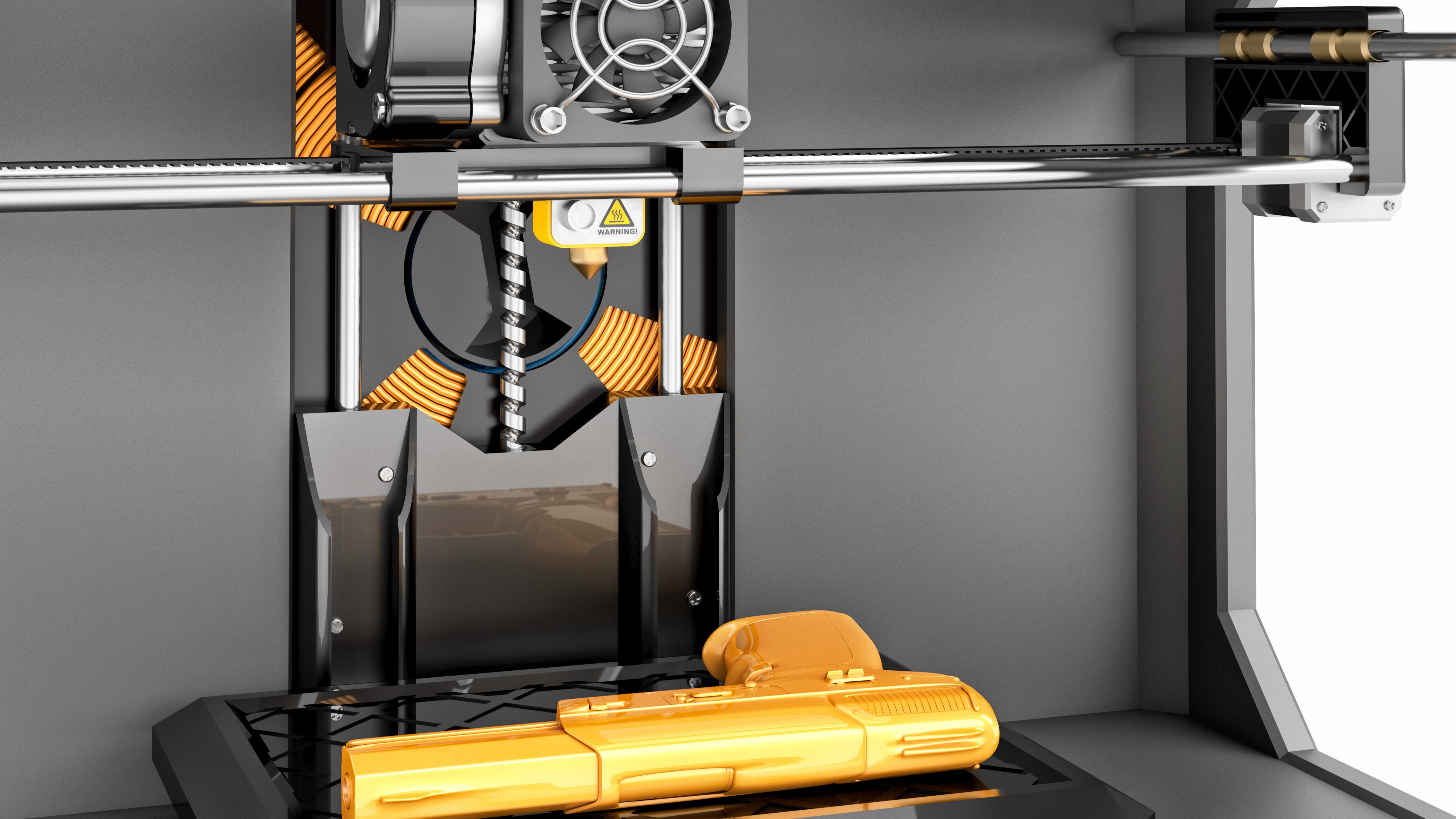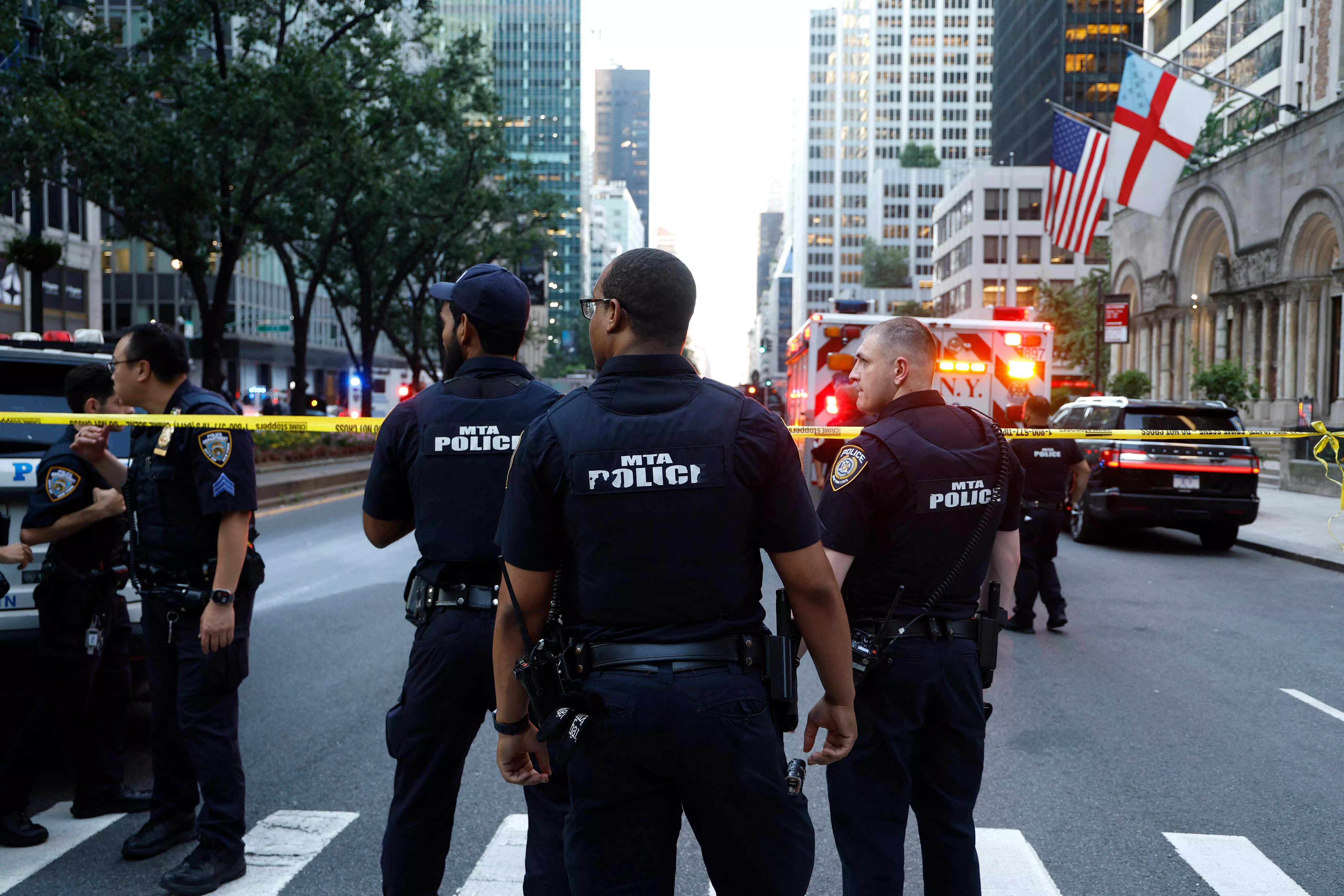
As some lawmakers look for ways to reduce gun violence, they’ve shifted their sites to 3D printers, introducing and, in at least one case, passing laws that would restrict their sales. Though the worst thing a 3D printer, even the best 3D printercan do on its own is burn you, any model can print the parts for so-called “ghost guns,” homemade firearms that have no serial numbers. 3D printer fans and gun rights advocates are both concerned that these laws would cause an undue hassle to hobbyists and students, without making the public safer.
A bill introduced in the New York State Assembly aims to stop the spread of ghost guns by making it necessary for anyone buying a 3D printer to undergo a criminal background check, which could take as long as 15 days. Opponents argue that the proposal would not effectively prevent ghost gun manufacturing, but it would have a chilling effect on kids who use 3D printers to learn and makers who use them for everything from appliance repair to robot building.
“I don’t see how it would reduce ghost guns at all,” Clayton “Uncle Jessy” Parker, who runs a popular YouTube channel about 3D printing, said in an interview. “There are already a large number of printers in New York State, including in public schools and public libraries, that are available to print with. There is no function in a 3D printer or software that will know if a part is for a ghost gun or for a kid’s toy.”
Firing Back at Ghost Guns
The proposed law would mandate background checks for all 3D printers sold in New York that can produce firearms or related components, like auto sears that convert semi-automatic guns into fully automatic ones, receivers, and similar items.
“Three-dimensional printed guns are growing more prevalent each year,” the bill’s sponsor, state senator Jenifer Rajkumar, wrote in a memo. “There were 100 taken off the streets of New York City in 2019. That number skyrocketed to 637 in 2022. Concurrently, ghost gun shootings have risen 1,000 percent across the nation.”
The New York Police Department has experienced a 60% rise in confiscated ghost guns on city streets for two consecutive years. Recently, the NYPD traced certain online ghost gun sales to a “ghost gun printing operation” housed in a daycare center, where 3D printers and firearms were found.
In New York, there are other bills besides this one that deal with 3D-printed guns. Two bills introduced in May aim to treat 3D-printed guns like other restricted weapons, such as machine guns and assault weapons. Both versions of these bills, one in the Senate and one in the Assembly are currently in committee review. However, they don’t restrict 3D printers themselves.
Several states, such as Hawaii, Delaware, and New Jersey, have individually enacted laws prohibiting 3D-printed firearms. However, there are currently no comprehensive federal laws banning ghost guns.
At least one other state is taking aim at 3D printers in the name of gun safety. California lawmakers have recently passed AB 1089, a bill aimed at ghost guns. The measure prohibits “the sale, purchase, possession, or receipt of a three-dimensional printer that has the sole or primary function of manufacturing firearms to or by any person in the state other than a state-licensed firearms manufacturer, as specified.”
Considering that any 3D printer can be used to print gun parts, it’s unclear how California’s law will work. Will you be able to buy any 3D printer, as long as it isn’t specifically marketed as a gun printer (which few, if any, are)?
The Biden administration has been advocating for an ATF rule introduced last year, which broadened the federal definition of a firearm to encompass its parts. This change would necessitate that gun sellers and individuals engaged in 3D printing firearms or their parts must include serial numbers. Firearms sellers would also be required to keep records of these serial numbers in their inventory permanently to assist in tracking and tracing these components.
Gun control advocates say ghost guns are a serious threat nationwide. Under federal law, individuals are not prohibited from manufacturing a gun for personal use, Josh Sugarmann, the executive director of the Violence Policy Center, said in an interview. However, unlike guns produced by licensed manufacturers, such weapons are not required to be stamped with a serial number.
“The proliferation of ghost guns and other homemade firearms threatens to destroy the very fabric of federal gun laws,” he added. “Gaps in federal law have helped create a huge demand for parts used to build homemade firearms, including those commonly known as ghost guns.”
Tracking the quantity of ghost guns is challenging because they are homemade. From 2016 to 2021, there was a 1000.3% increase in ghost guns collected and reported to the Department of Justice. Everytown for Gun Safety calls ghost guns “the fastest growing gun safety problem in the country.” The gun control group maintains an online database of shootings linked to ghost guns.
Pushback Against Printer Laws
Laws like those proposed in New York and California could also affect hobbyists who use 3D printers. “My biggest concern is kids who want to learn more about STEM, making, creating, and coding and would be potentially prohibited from purchasing a 3D Printer because of this,” Parker said.
Parker also said that the proposed New York law doesn’t do enough to distinguish 3D-printed items for ghost guns from those intended for innocent reasons.
“How is this law going to differentiate from 3D printed ghost gun parts to parts I have printed to fix my broken refrigerator door?” he added. “There is also nothing preventing anyone from purchasing printed parts online from another state and having them shipped to you in New York state. What about 3D-printed Nerf gun parts? I am all for better legislation for firearm sales and background checks of actual firearms, but this just seems like a huge waste of taxpayers’ time and money.”
Grant Schmidt, the owner of Shot Tec, a firearms sales and training company, suggested that regulating 3D printers is a fruitless effort.
“3D printers will soon be as ubiquitous as paper printers,” he said in an interview. He added that ghost guns are a return to the traditional practice of local firearms craftsmanship.
“I had my first firearm, a well-engineered potato cannon that shot more than potatoes, confiscated by local police at 14 years old,” Schmidt said. “It was made from plumbing and BBQ hardware store off-the-shelf parts, and that was prior to the internet offering free blueprints and STL files.”
Schmidt’s company has a 3D printer and uses it to make things like holsters.
“But we haven’t really used it for actual firearms manufacturing since conventional methods are still faster, easier, and more productive,” he added. “The high majority of so-called ghost guns are, in fact, not 3D printed and are made from gun parts kits or hardware store parts.”
Experts in civil liberties have also expressed concerns about regulations aimed at 3D-printed firearms. They argue that banning these firearms or their design instructions could potentially infringe on the First Amendment because the files are essentially composed of text and code.
“We may desire robust safeguards against the spread of dangerous information, but in doing so, we should be wary of allowing broad regulations to survive strict scrutiny in the name of national security,” wrote attorney Andrew Huang last year in a Harvard law school publication. “Society may instead be better off setting more comfortable precedents by employing intermediate scrutiny for 3D printer code litigation, even if the laws in question are content-based.”







